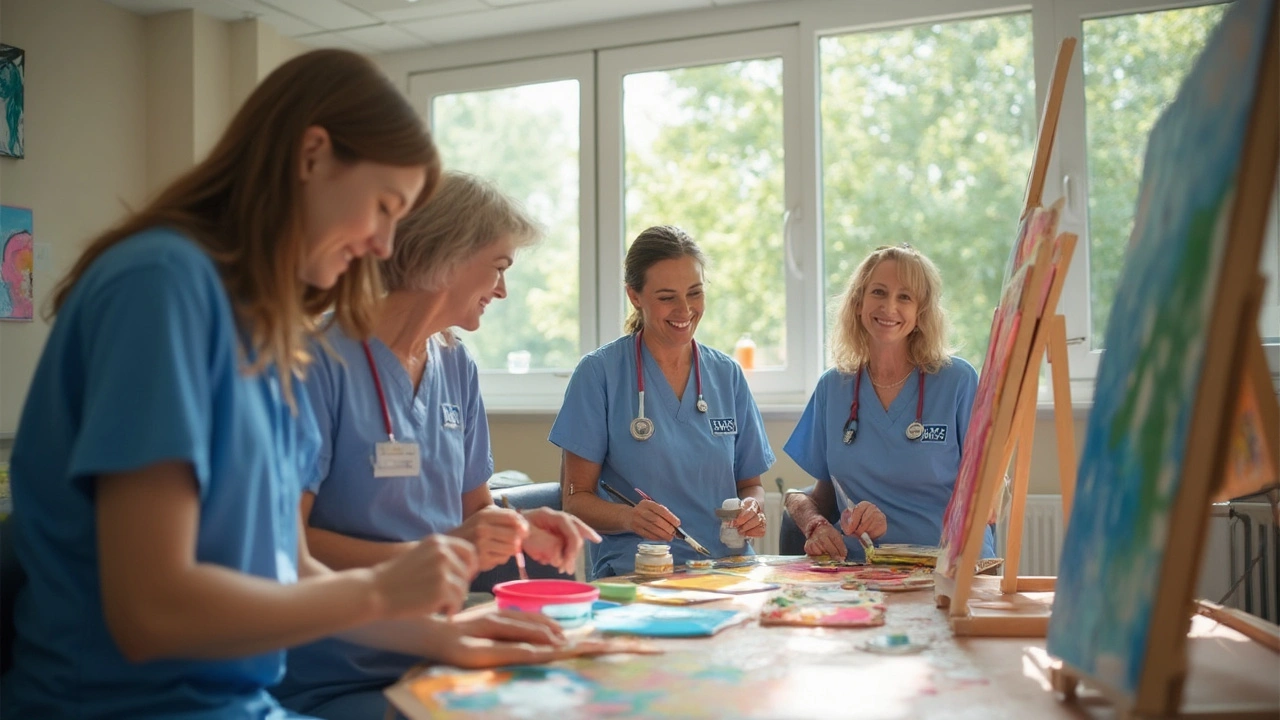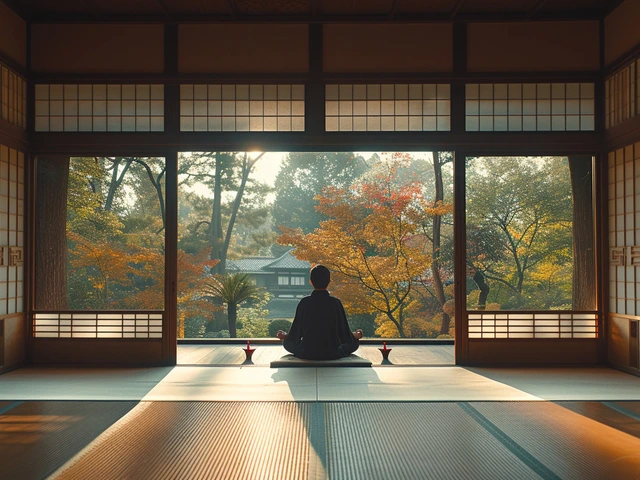
You wouldn’t expect to see a paintbrush or a drum in a doctor’s toolkit, but these days, hospitals and clinics are stocking up. Imagine a cancer patient humming a song as therapy, or a veteran painting out a trauma too heavy for words. This isn’t a creative writing prompt; this is modern medicine.
What Are Creative Arts Therapies?
Creative arts therapies bring together different ways of self-expression—think art, music, dance, drama, and even poetry—to help people heal. These therapies aren’t about making a masterpiece or hitting all the right notes. They’re about the process: expressing what’s tough to say, working through frozen feelings, or reclaiming joy. Doctors are sending their patients to music rooms, easels, and group movement sessions, not because traditional treatments are failing, but because sometimes, pills and talk therapy aren’t enough. The heart of creative arts therapy is licensed professionals who know how to turn creative activity into an engine for healing.
Here’s the cool part: you don’t need a special talent to benefit. Sticking figures on paper or drumming along with others can make a big difference. These therapies are used with all sorts of people—kids fighting chronic illness, adults living with depression, survivors of trauma. Why? The brain processes creative activities and emotions in ways that can unlock lives stuck by stress, pain, or loss.
One fascinating fact—music therapy, for example, actually changes brain activity. Functional MRI scans show that listening to music can light up emotional, memory, and motor parts of the brain simultaneously. In one 2023 study at Beth Israel Medical Center, people recovering from strokes who got music therapy improved their language skills faster than those who didn’t. Art therapy’s equally compelling: Clinical studies say veterans with PTSD who engaged in regular art sessions had greater anxiety reduction than those using standard therapy alone.
It’s not only about mental health. The American Cancer Society lists creative arts therapies as reliable help for cancer pain, chemo-related nausea, and the emotional wear and tear that comes with chronic illness. And you know what? They’re recognized by most government and insurance agencies—meaning they’ve joined the medical mainstream.
If you’re wondering whether these therapies actually deliver value, check out this quick look at outcomes from several big studies:
| Study | Therapy Type | Main Outcome | Year |
|---|---|---|---|
| NIH (Meta-Analysis) | Music Therapy | Reduced anxiety, improved mood in cancer patients | 2021 |
| Beth Israel Center | Music Therapy | Improved speech/language in post-stroke patients | 2023 |
| VA Boston Healthcare | Art Therapy | Lower PTSD symptoms in veterans | 2020 |
| Johns Hopkins | Dance/Movement Therapy | Better motor skills in Parkinson's patients | 2022 |
Why Doctors Are Adopting Creative Approaches
Picture this—you walk into an oncology ward and hear gentle guitar music drifting through the halls. Seems like a detail for comfort, but it’s actually a tool with real clout. Doctors are embracing creative arts therapies for a reason: patients get better outcomes, both in body and mind. These therapies cut through some of medicine’s biggest roadblocks—emotional shutdown, stress that slows healing, and isolation that makes recovery even tougher.
Doctors are a data-driven bunch. They don’t just try new fads for fun. They look for things that can help people get unstuck, cope better, and carry on with treatment routines. Music and art give patients an active role, in some cases even spurring them to stick with challenging rehab or chemo schedules. When a Parkinson’s patient keeps attending dance/movement classes, their balance and confidence actually pick up too.
Another answer lies in brain chemistry. When people make music or art, dopamine and endorphin levels go up—these are the brain’s feel-good messengers. For folks fighting depression, anxiety, or chronic stress, a half hour of creative work lowers stress hormone levels, lights up neural connections, and resets mood better than scrolling social media ever could. Doctors know not every patient wants to talk, and for some, language isn’t the way in. Art and music fill that gap.
You’ll also see creative arts therapists on the team, not just behind-the-scenes. Hospitals like Cleveland Clinic, UCLA Health, and Mount Sinai have staff that co-treat alongside physicians, collaborating on patient recovery plans. This isn’t about replacing medication or surgery—it’s about making those paths work better and easier, often with fewer side effects or setbacks.
Check out these reasons doctors are adding a creative twist:
- Breakthroughs for patients who feel stuck with traditional tools
- Ease for getting through tough treatments (chemo, chronic disease)
- Boosts to motivation and engagement in physical therapy
- Emotional healing without pressure to "find the right words"
- Backed by research and now covered by more insurance policies
Doctors see creative arts as just another way to give patients a fighting chance—proven, practical, and frankly, sometimes way more enjoyable than a prescription pad.

What Happens in a Session? Real-Life Examples and Unexpected Benefits
So, what actually happens in a creative arts therapy session? It kicks off low-pressure. You might see a table with piles of colored pencils, stacks of clay, musical instruments, or even just some paper and prompts. There’s often music in the background, and always a trained professional steering things, making sure the activities match what a patient needs that day. Unlike a typical art or music class, the focus isn’t the product. It’s the process and the small shifts folks notice inside themselves along the way.
Here’s a look at the variety: In art therapy, you might paint out a feeling or story, toss bad memories onto a canvas, or build simple structures as a metaphor for overcoming roadblocks. In music therapy, activities range from drumming circles to songwriting, or even guided listening for emotional release. For kids with autism, sessions often use fun sound-making and drawing to unlock communication. Older adults might try movement or sing-alongs to tap old memories and get bodies moving again.
Don’t think these are just good for “artsy” types—real transformation happens for people who never cared about art or music before. One teenager dealing with anxiety described it best: “I didn’t talk at first, but once I started sketching, the walls came down.”
Some groups benefit in extra-special ways. For veterans, painting or sculpture helps process trauma beyond what words provide. With hospitalized children, puppet-making can help explain scary concepts and ease medical fears. Stroke survivors find that drumming with one hand can spark new neural pathways, helping them regain function. Parents sometimes join the music portion, reporting deeper connection with their kids.
Here’s an unexpected bonus: creative arts therapies don’t just help process tough emotions; they build confidence for handling future stress. After weekly sessions, many people report they can manage pain and anxiety better without reaching for more medicine. Some keep using what they learned, drawing during tough periods, or replaying their favorite music as a mood boost. Stats say 70% of cancer patients using these therapies have a lighter mood, less pain, and finish their courses of treatment with fewer interruptions.
To show just how much these sessions stick, 82% of adults surveyed at NYU Langone's Integrative Health Center said they wanted to keep doing art or music therapy even after formal treatment ended. That says something about the impact—and the comfort these creative tools bring.
How to Access Creative Arts Therapies: Tips for Patients and Caregivers
If you’re thinking this could be helpful for yourself or someone you know, there are more options now than ever. Hospitals and health centers across the U.S. and Europe have creative arts therapy programs open to both inpatients and outpatients. Many insurance plans, including Medicaid and Medicare in certain states, are now covering sessions led by board-certified therapists. Still, access can vary, so it’s worth asking your doctor, care manager, or therapist for referrals.
Not sure what to look for? Start by asking if your provider has certified art, music, or dance/movement therapists on staff. If not, check directories from the American Art Therapy Association or the American Music Therapy Association—they’re easily searchable online. You’ll want someone licensed, with clear experience in medical or mental health settings. Don’t settle for a non-certified teacher; they’re great for enrichment, but not for real health interventions.
If you’re going the private route, sessions can range from $60 to $150, but community clinics and nonprofits often offer sliding scale rates, or even free workshops for kids, families, and veterans. Some advice—if you’re new to this, don’t expect to “feel better” in one visit. Change builds over several weeks, so give it a real shot. Try different approaches: If you freeze up at drawing, music therapy might be a better fit, and vice versa. There’s a good deal of virtual classes too, if travel’s tough or you prefer your home space.
For parents, including kids in these sessions—for ADHD, autism, or even just stress—can be a game-changer. Caregivers for people with dementia find that regular music or art activities lower agitation, spark old memories, and bring moments of real connection. Pine Rest Christian Mental Health Services in Michigan reported a 40% drop in patient agitation after introducing short music therapy blocks into elder care routines. At-home, it can be as simple as a family art night, listening to calming music, or gentle creative prompts like “draw your happiest place.”
Sometimes, folks want to know if there are red flags. Creative arts therapy is safe for almost everyone, but for severe trauma or active psychosis, it should only be led by a clinically trained therapist. Always check credentials, especially if booking private sessions.
The bottom line? Creative arts therapies offer a genuine path to healing that’s accessible, practical, and full of surprises. Whether you’re battling chronic pain, depression, or just the weight of everyday stress, a little creativity could be the best medicine you never knew you needed. Doctors sure think so—and in 2025, art and music are making the medical rounds like never before.





